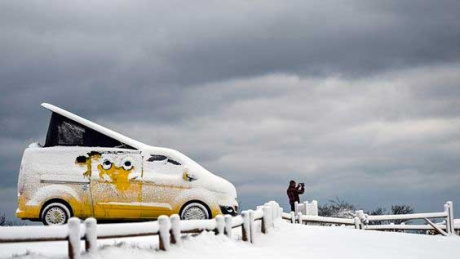
In times of cold weather, your vehicle might be more effective than you expect. Cold weather and winter conditions can significantly affect your fuel economy.
Under these circumstances, gas mileage can be surprising and unpredictable if you're not prepared. Fortunately, we’re here to help you understand that.
Let’s explore some straightforward and perhaps less obvious tips on how to optimize your driving, regardless of the weather conditions you face.
Impact of Winter on Fuel Economy

Cold weather during winter driving conditions can reduce fuel economy. The effects vary by vehicle model. However, conventional gasoline vehicles typically experience a drop in fuel economy during city driving in this season.
One of the reasons for lower winter fuel economy is that battery performance decreases, which makes it harder for the battery to charge. This is also true for the regenerative braking system in electric vehicles.
As a result, it affects engine and transmission temperatures, making it difficult for the engine to reach its most fuel-efficient temperature. Additional power is used by heated window defrosters and heater fans.
Cold weather increases aerodynamic drag, and winter grades of gasoline can have slightly less energy than summer blends. Another concern is severe winter weather, as snow-covered roads decrease tire grip, wasting energy.
Safe driving speeds on slick roads can be much lower than usual, thus reducing fuel economy. Using four-wheel drive consumes more fuel.
Factors Reducing Winter Fuel Economy

Cold air can affect your tires as much as your engine. Remember that freezing causes the air inside the tires to compress, leading to decreased tire pressure and increased drag. Over time, this increased drag can impact fuel economy.
The Role of Tires in Cold Conditions

Always keep your tires fully inflated. By monitoring their pressure, you can improve your gas mileage by up to 3% and extend the life of your tires. Use a tire pressure gauge and consult your owner's manual to determine the optimal PSI.
Maintaining Optimal Tire Pressure

Now that we've covered this, it's essential to note that although we can't control the weather, there are straightforward ways to make driving easier and more economical during the winter.
Some methods include parking in warmer places like garages to maintain engine temperature and combining trips when possible, especially after work, to benefit from a warm engine.
Minimize idling to warm up the car, and instead start driving gently after a short period. Check your tire pressure regularly and use the recommended oil for cold weather, as advised by the manufacturer.
Adapting for Winter Driving
For plug-in hybrid or electric vehicles, plugging in can extend the vehicle's range. Electric vehicle users should use seat warmers conservatively to conserve range.
In conclusion, adapting your driving habits during the colder season can prepare you for varying weather conditions and help optimize your budget throughout the year. Follow these steps to keep your driving both economical and safe.
Same articles

Understanding Vehicle Inspection and Verification Services: Why They Matter for Every Driver
GuidesVehicle inspection and verification services are an essential but often overlooked part of keeping roads safe and cars legally compliant. Most people only think about inspections when it’s...
KLIFEX Brand Overview: High-Quality Automotive Repair Kits for Affordable Repairs
GuidesThe automotive aftermarket has long needed solutions that combine reliability, durability, and affordability. Many car enthusiasts and services are looking for a way...
Fast, Reliable Vehicle Emissions & Inspection Services Made Simple
GuidesFast, reliable emissions and inspection services are essential for keeping vehicles road-ready, compliant with environmental regulations, and safe for daily driving. If you’re looking for quick...

